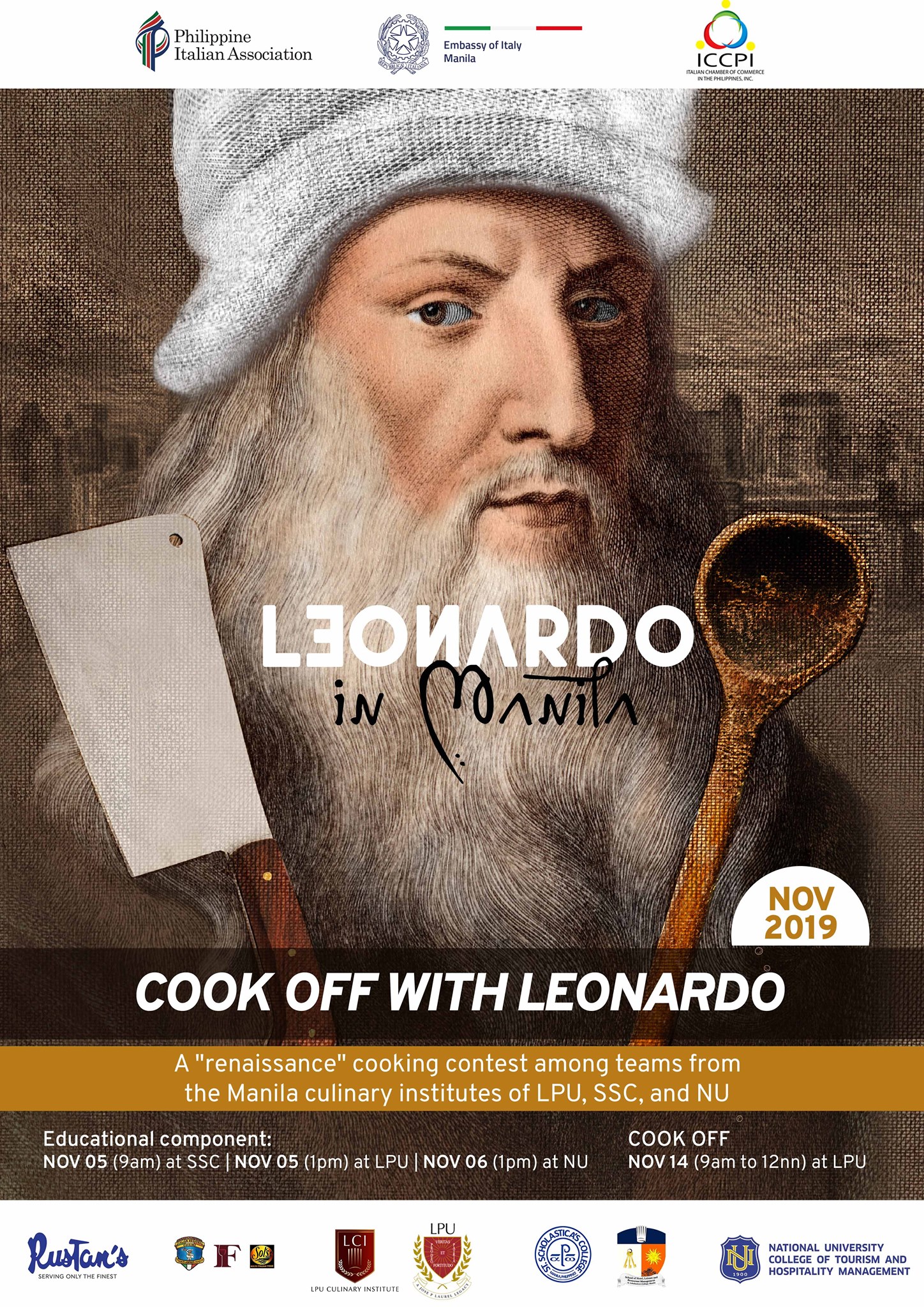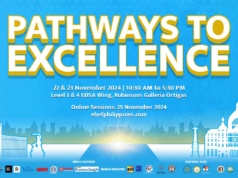Leonardo in Manila

Thursday, November 14, 2019 | 9 AM – 12 PM
Lyceum of the Philippines University Manila
Real St, 1002 Manila, Philippines
Dates: November 05-06 (Lectures in Universities);
November 14 (Cooking contest)
Partner universities: Lyceum of the Philippines University Manila, Culinary Institute; St. Scholastica’s College, Manila, School of Hotel, Leisure & Restaurant Management; National University, College of Tourism and Hospitality Management
Host venue for the cooking contest: Lyceum Culinary Institute, Muralla Street, Manila Intramuros.
Main sponsor: Rustan’s
Supported by: Francesco’s Kitchen; Sol’s Italian Food
This activity is curated and lead by Chef Salvatore Arria, Consultant in Italian Regional Cuisine.
INTRODUCTION:
This culinary contest is being held in honor of Leonard da Vinci’s five hundredth anniversary of his passing. Leonardo da Vinci is best known for his world famous paintings, sculptures and numerous inventions, many of which were centuries before their time. It comes as a surprise to almost everyone when they discover that his first and only real love had nothing to do with his talent with a brush, chisel or his genius in designing and building machines.
As a small boy, Leonardo’s father remarried with a young lady whose family had a bakery. Leonardo was a chubby boy, loved to eat and he spent hours in the kitchen learning how to cook. Later on as a teenager, while attending a school for the arts and needing spending money, he found work at a restaurant on the Ponte Vecchio in Florence called Le Tre Lumache (The Three Snails). There he worked as an assistant cook and eventually, due to the unexplained poisoning over a period of time of the twenty cooks who worked there, became head cook. He would, even in this “art,” show his need to develop/invent a concept that is very similar to Nouvelle Cuisine. Unfortunately, patrons of the restaurants did not appreciate the minimalist approach to the food they were served.
His passion for the culinary arts will continue throughout his life. It is not a well known fact that he preferred to cook more than he did to paint or sculpt. Many of his early inventions were all thought of to make things easier for cooks in the kitchen.
This cooking contest is meant to honor the world’s best known genius mind for what he really wanted to be known as, Leonardo da Vinci: “Master Cook”. The theme of this cooking contest will be cooking as it was done in Leonardo da Vinci’s time, the Renaissance period.
This event will be divided according to:
Educative part: a lecture by Italian Chef Salvatore Arria will be delivered to the students of each of the institutes participating (St. Scholastica, Lyceum and National University). It will serve to contextualize Leonardo da Vinci in cuisine, his recipes, the historical context and the ingredients available in Italy at that time. It will also be used to remind the rules of the cooking context.
Lecture dates will be on:
November 05, 9 AM to 12 NN at St. Scholastica; 1 PM to 4 PM at Lyceum of the Philippines Manila;
November 06, 9 AM to 12 NN at National University.
Preparation part: each school will work on the recipes that Leonardo himself could have reasonably proposed, purchase the ingredients, appoint a team of three to represent the school during the competition.
Contest part:
NOVEMBER 14, at the Culinary Institute of Lyceum of the Philippines University
9 AM to 12 NN preparation
1 PM awarding
JUDGES:
Assigned Judges:
Chef Salvatore Arria-Consultant, Italian Regional Cuisine
Chef Francesco Rizzo-Chef Patron at Francesco’s Restant
Chef Moreno Sartor-Chef & Manager of Sol’s Italian Food
JUDGING CRITERIA
For this competition the judges will be using the E.A.T. method of judging. E.A.T. stands for Execution, Appearance, Taste and each of these categories will be judged from 1 to 10.
The three different teams will compete on November 14, to cook and present their recipes and will be given 3 hours to prepare the entire menu they have planned.
Each university team will be responsible to research recipes of that period and mode of preparation and produce three dishes that would have been served at the royal courts and best restaurants of the day.































